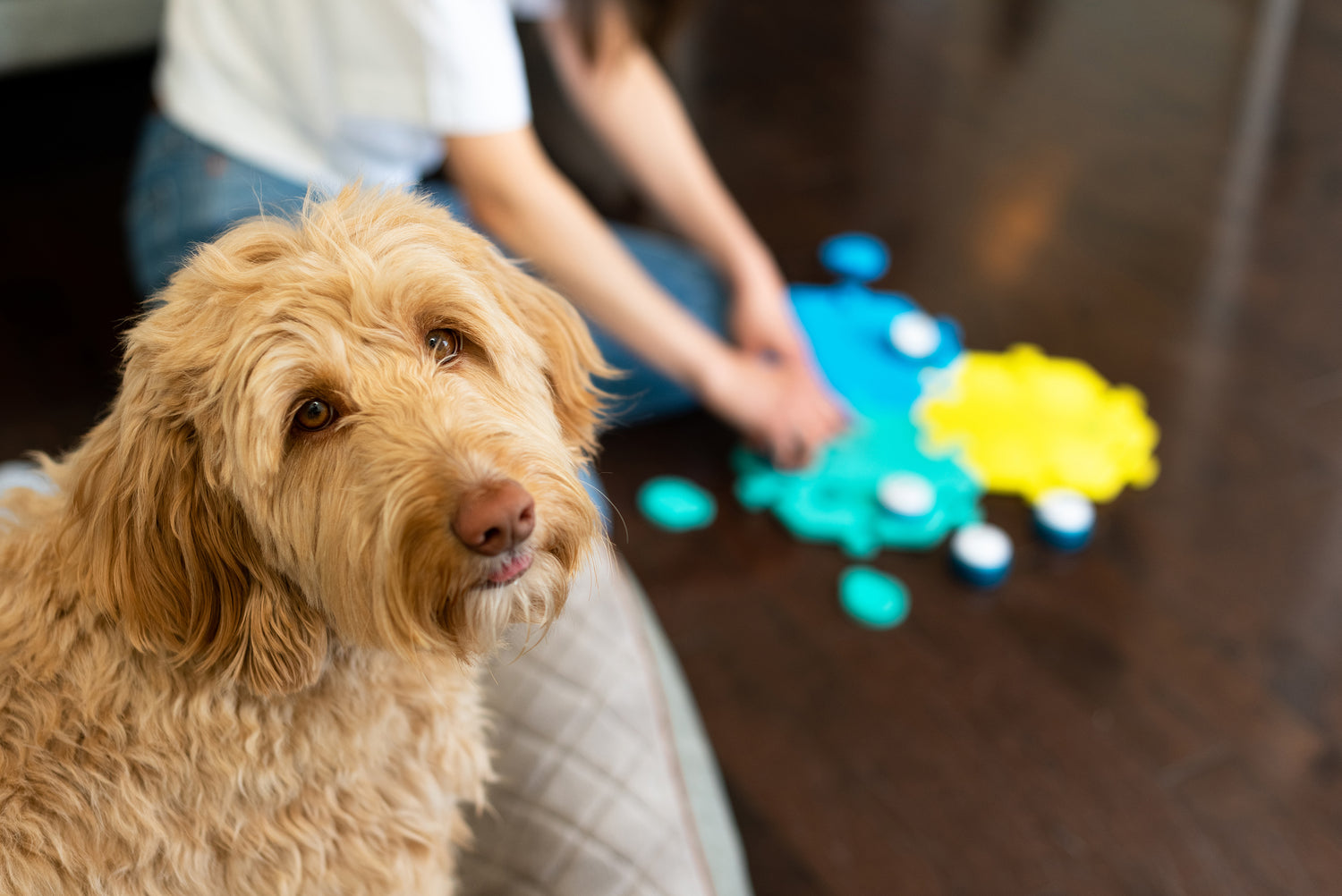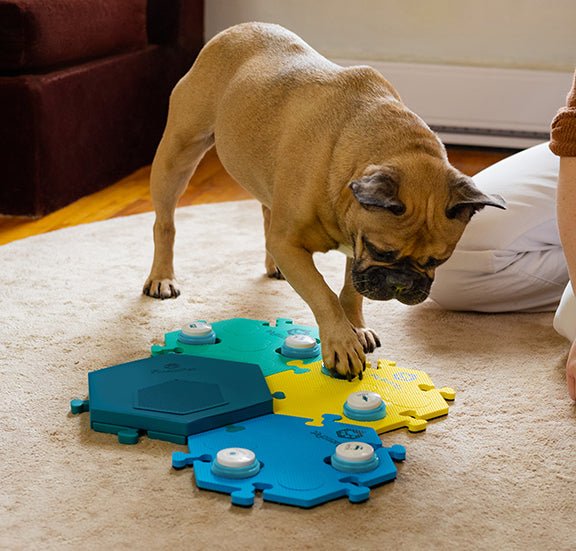Inspired by videos of Bunny the Talking Dog, Rad ordered a set of FluentPet buttons to try with her shy 6-month-old Golden Retriever, Cache. She set them up and started teaching him to use them, just like FluentPet instructed. And .. nothing. Cache didn’t interact with the buttons at all. Nothing for the first few weeks and then only accidentally or haphazardly for weeks after that.
Rad kept modeling every day, hoping for a breakthrough. That breakthrough came a bit after the one-month mark. Laughing, Rad remembers, “ I knew to expect a slow start but it was still brutal. It feels ridiculous trying to talk to a dog every day for a month with them just looking at you like you’re nuts.”
As it turns out, Cache was the type of learner who went from 0-60. He got his first buttons in late October. He finally began using them on purpose around Thanksgiving. By Christmas, he had over 20 buttons and was using them every day.
Rad and Cache never looked back from there. She explains, “Now he learns them so fast I can’t believe he actually knows them already, yet he uses them correctly after only one or two modeling events. So I think that’s something I’d love people to know: how they start off isn’t necessarily how they’ll always be and it doesn’t predict their potential.”
Now, a year later, 1 ½-year-old Cache has 108 buttons on his soundboard. He talks all day. He loves his buttons so much that he often sleeps by them. According to his mom, it’s clear the soundboard is now his most valued possession in life, even though he started out afraid of it.
If you’ve read this far, chances are you and your learner are still in the beginning stages of button teaching. As Rad's story illustrates, a slow start is not a bad sign. In fact, your breakthrough could be right around the corner. Look for the following indicators that your dog or cat is progressing in their learning journey, even if they have yet to press a button.
8 Signs Your Learner May Begin Pressing Buttons Soon
They’re listening. If your dog or cat turns their head or perks their ears when you speak, it indicates they're paying attention to you.
They recognize certain words. Notice if they respond to specific words or commands like “play,” which can be early candidates for button use.
They’re trying to communicate with you. Look for increased body language or vocalizations aimed at communicating with you, such as greeting stretches or gentle nudges.
They recognize your routine. If they start anticipating regular events like meals or walks, it's a good time to model related buttons.
They watch you. They show engagement by watching you closely when you demonstrate the soundboard.
They investigate the soundboard. Any curiosity about the soundboard, like sniffing or approaching it, is a positive sign.
The soundboard becomes more valuable.If they begin to spend more time near or on the soundboard, it suggests they see its value.
Button presses become familiar and mean good things. Watch for signs they understand the buttons' meanings, such as excitement or appropriate reactions when a button is pressed.
Rad's experience with Cache serves as an inspiring reminder that patience and persistence are a critical part of your button journey. Each learner, whether canine or feline, has their own unique pace and style of adapting to new challenges. The initial silence or confusion should not be a deterrent; rather, it's a part of the learning curve that can lead to rewarding breakthroughs. As you observe these signs of progress, remember that every small step is a victory leading towards a deeper bond and a richer understanding between you and your companion. Keep encouraging, keep modeling, and soon, like Cache, your learner might surprise you by not just pressing buttons, but by truly communicating their thoughts and needs.
Catch Cache in action on Instagram at @cachecowadventures




Leave a comment
This site is protected by hCaptcha and the hCaptcha Privacy Policy and Terms of Service apply.